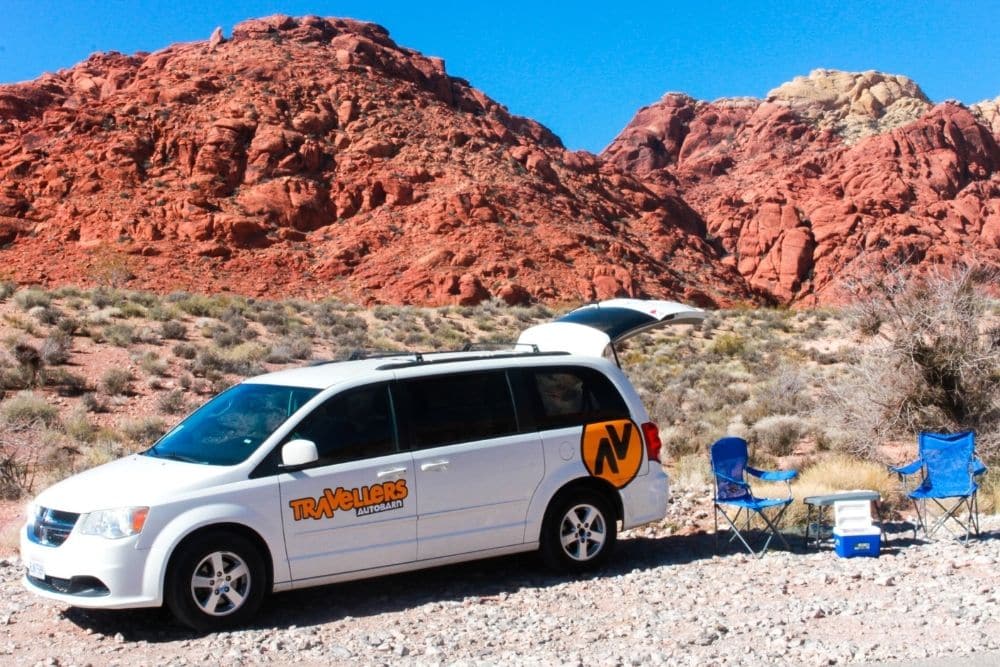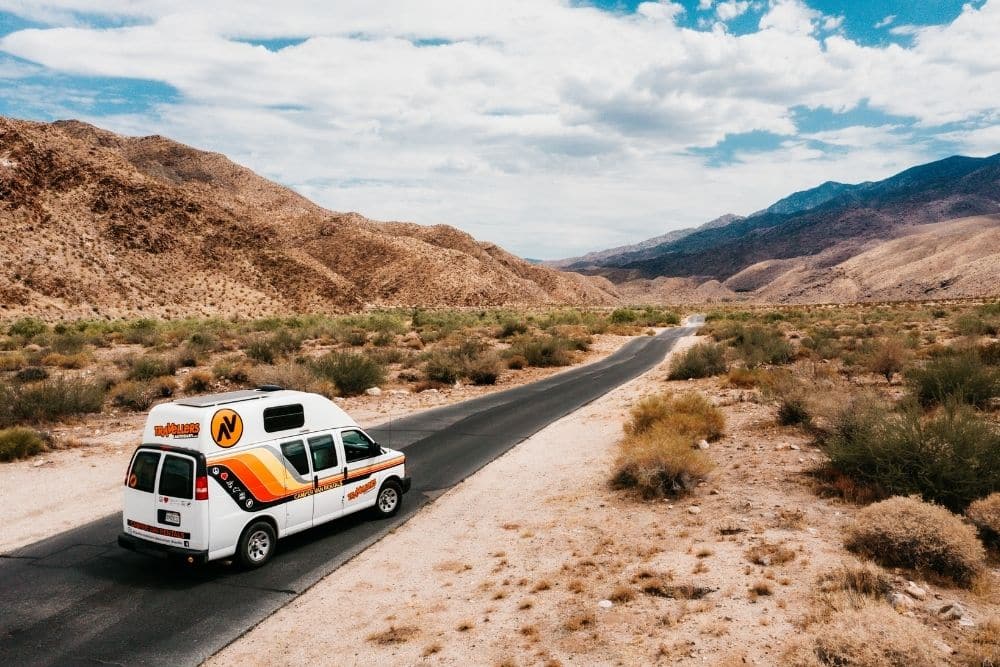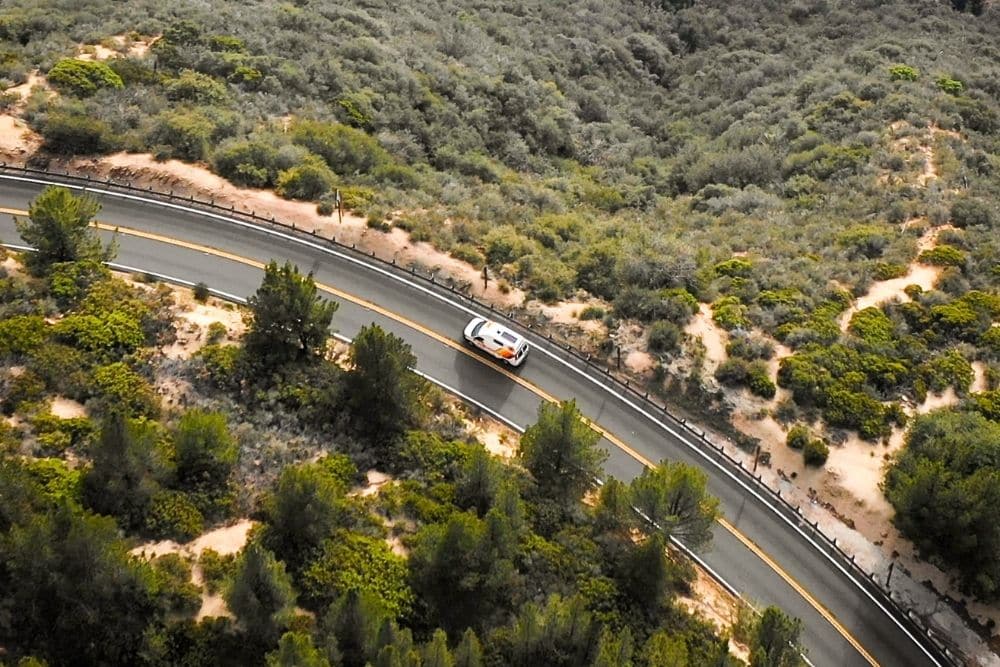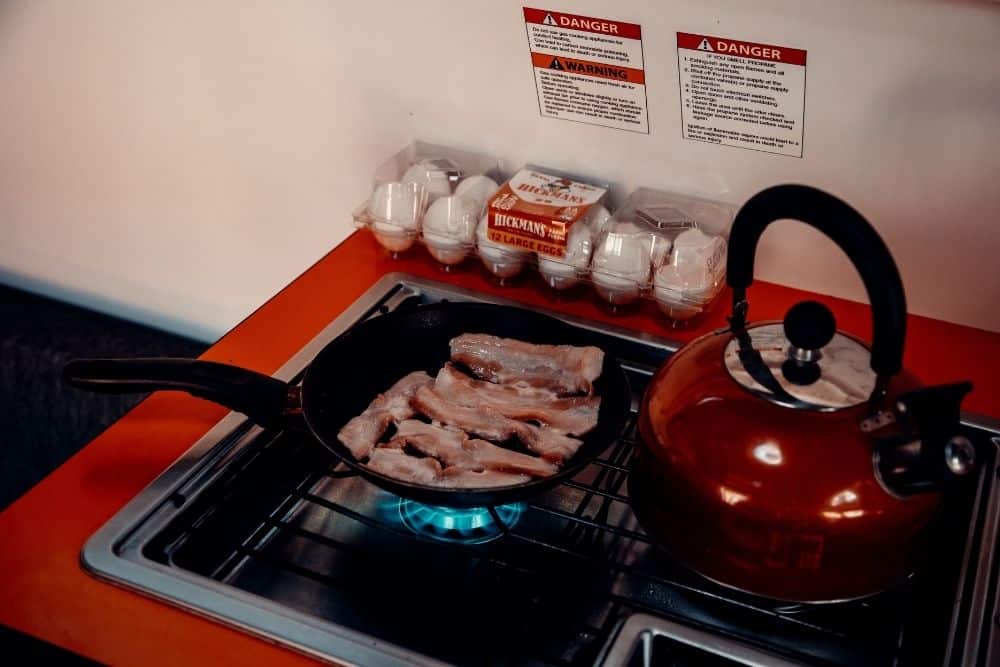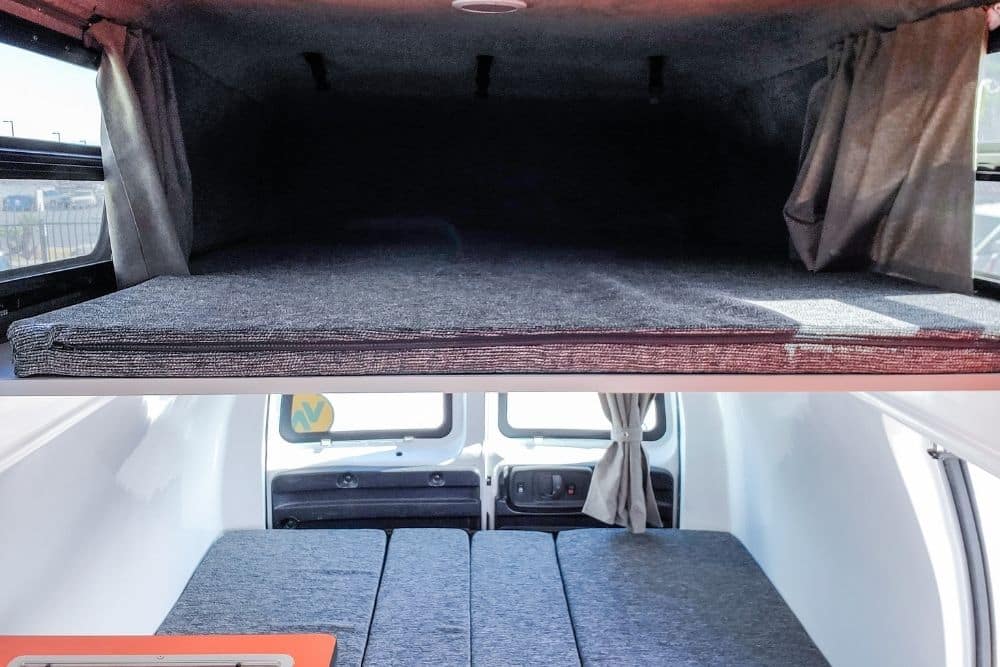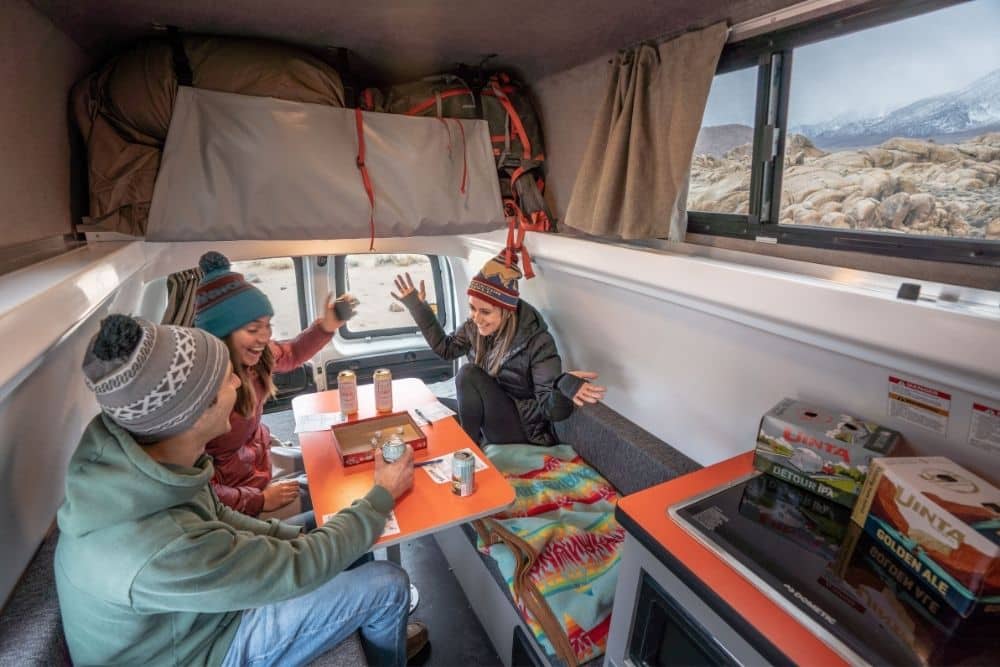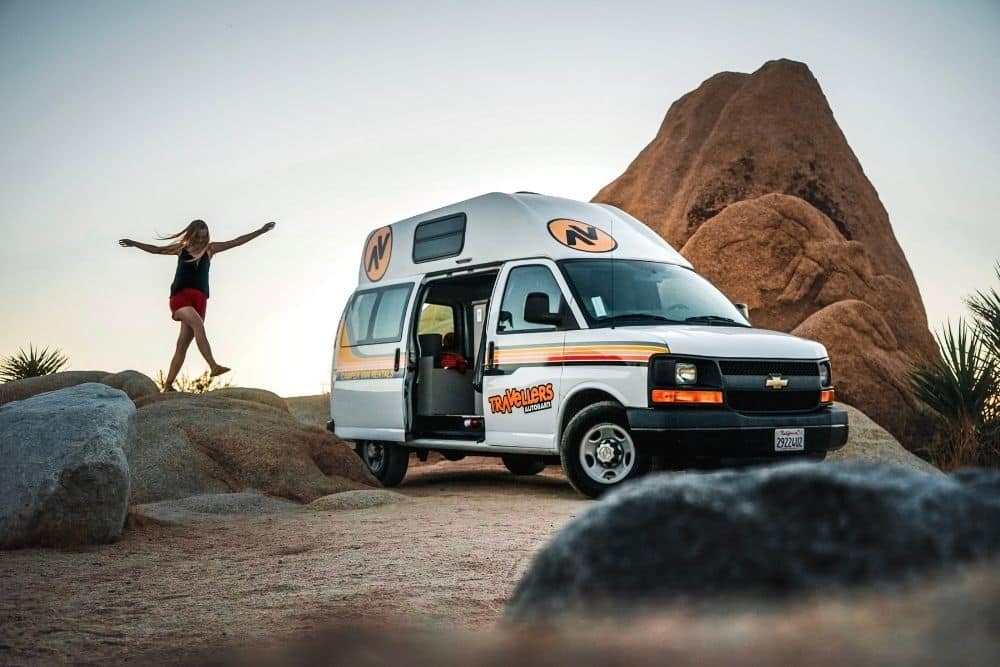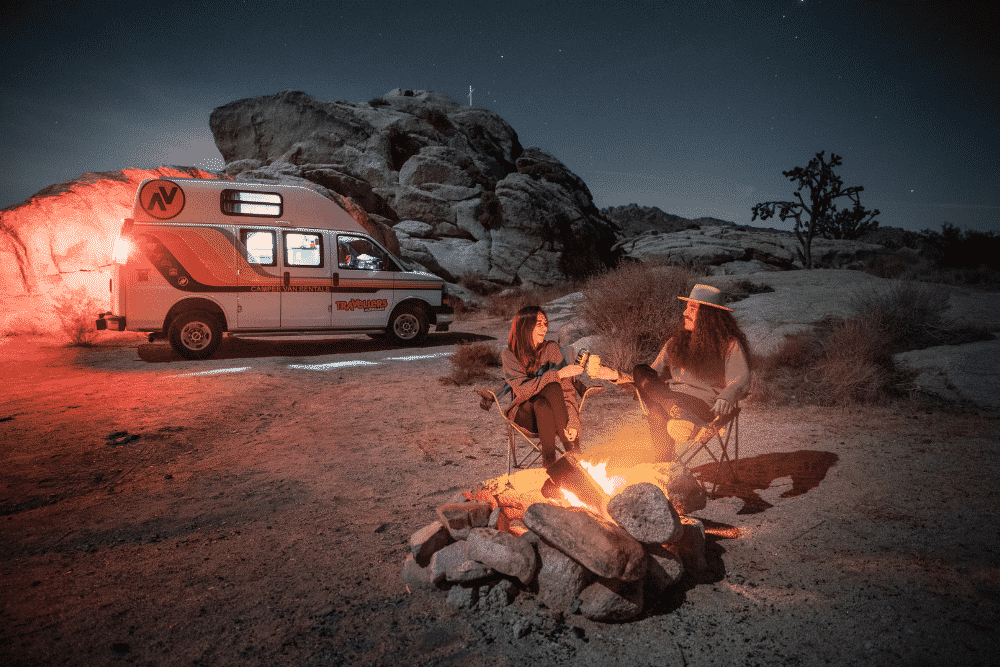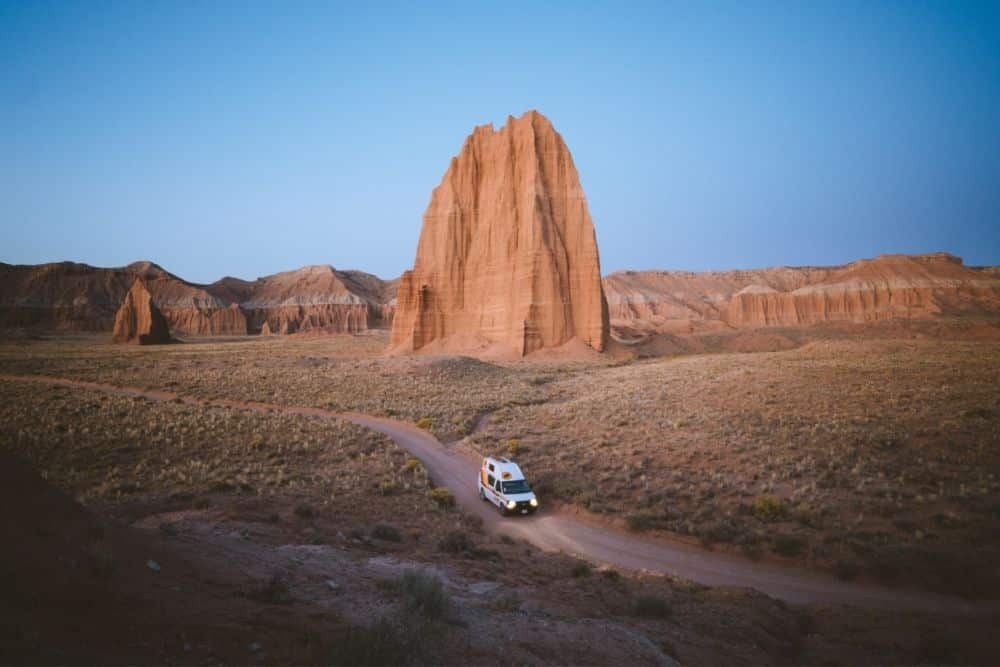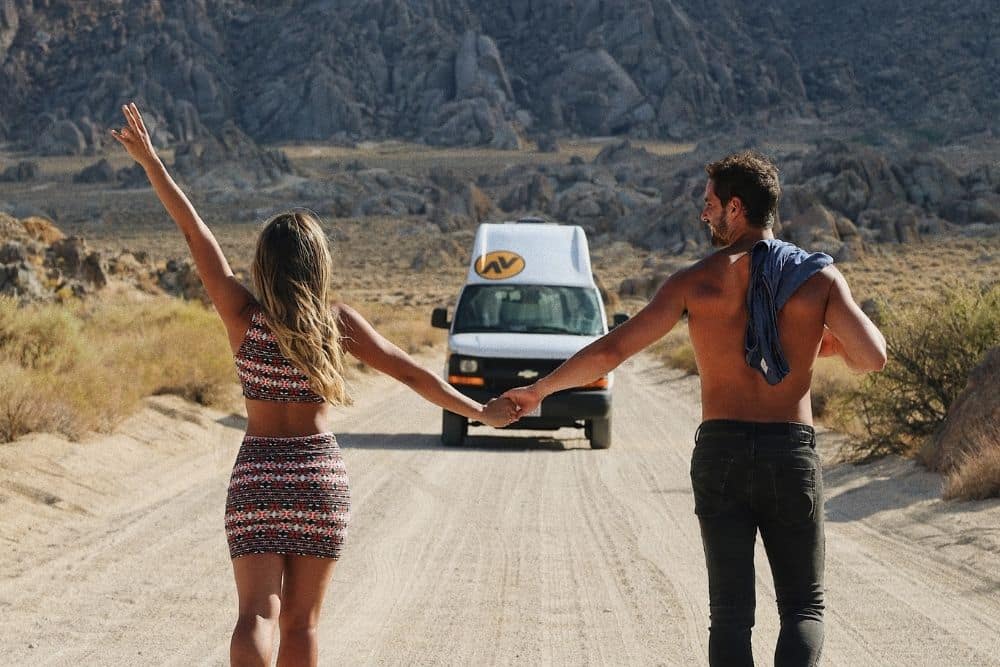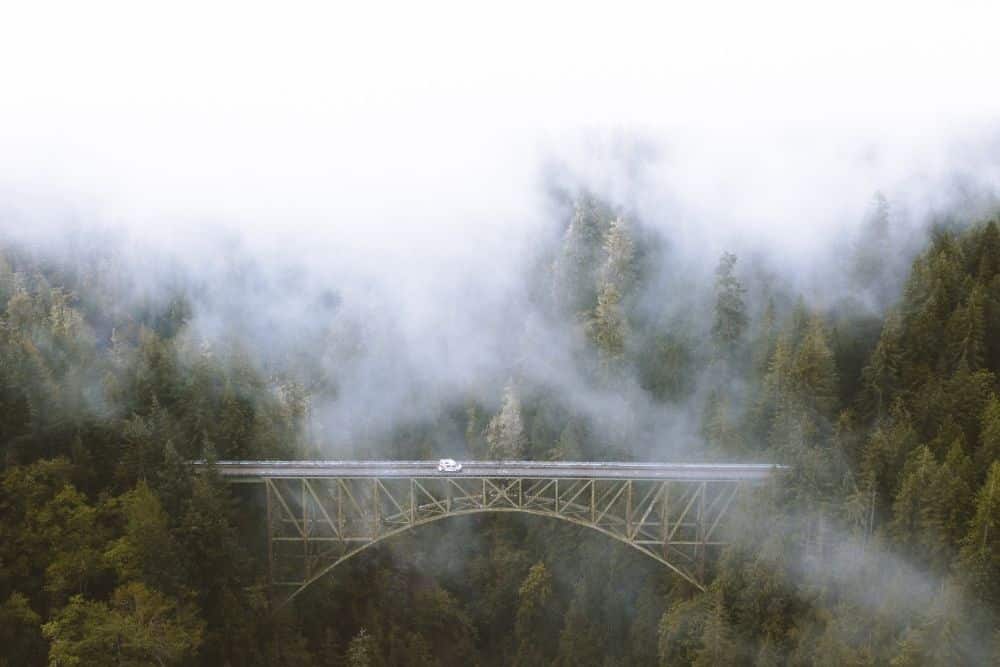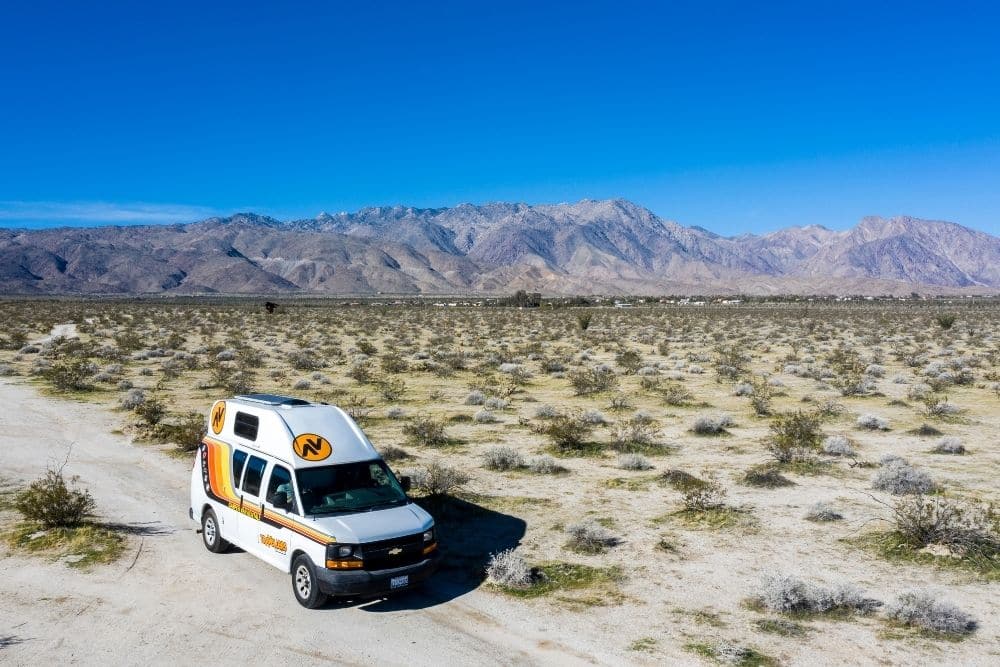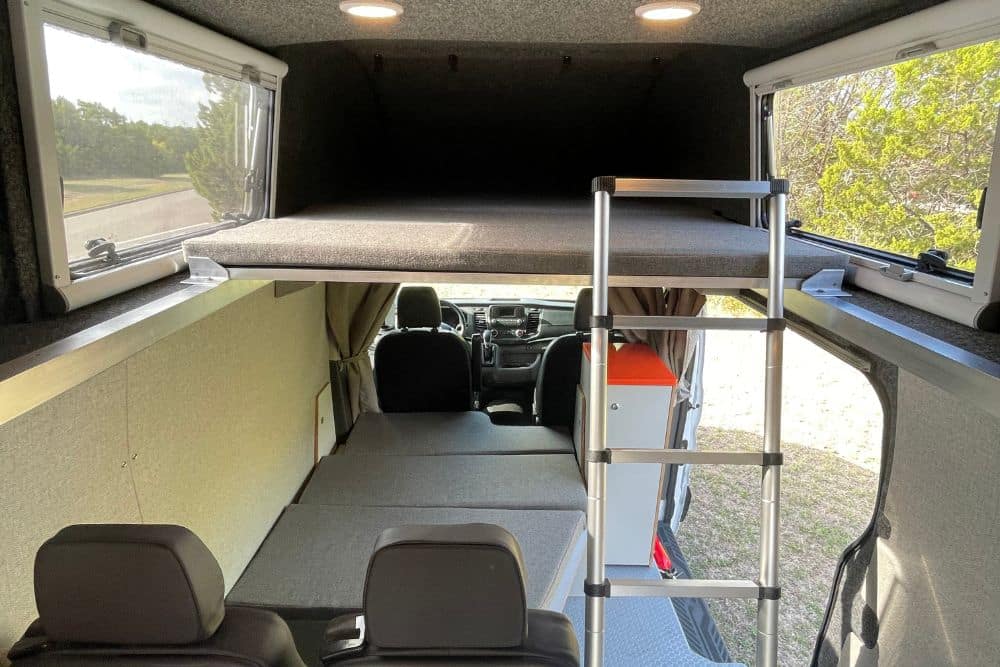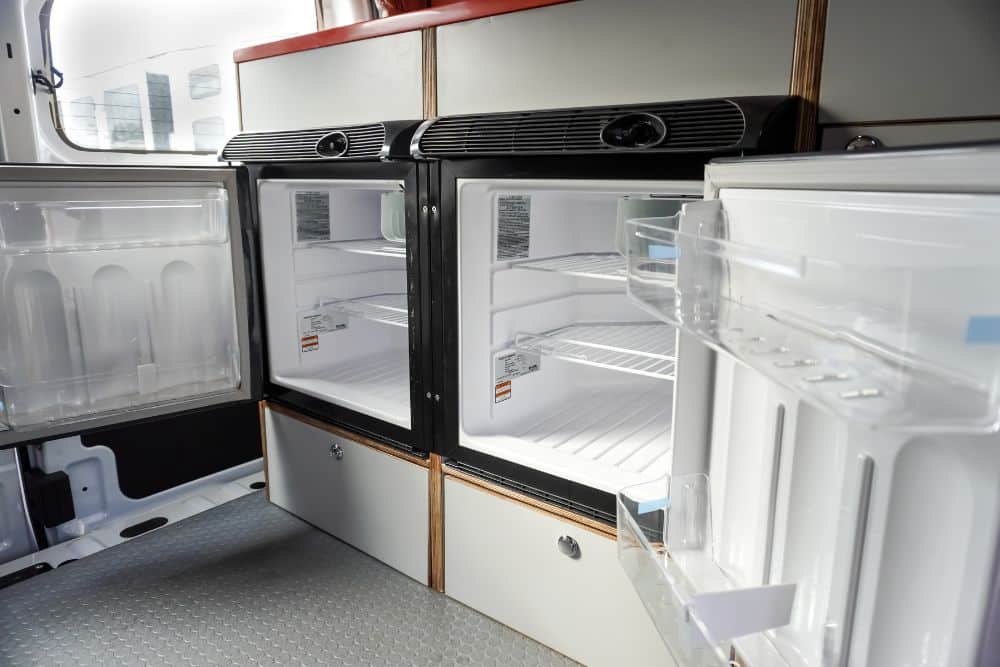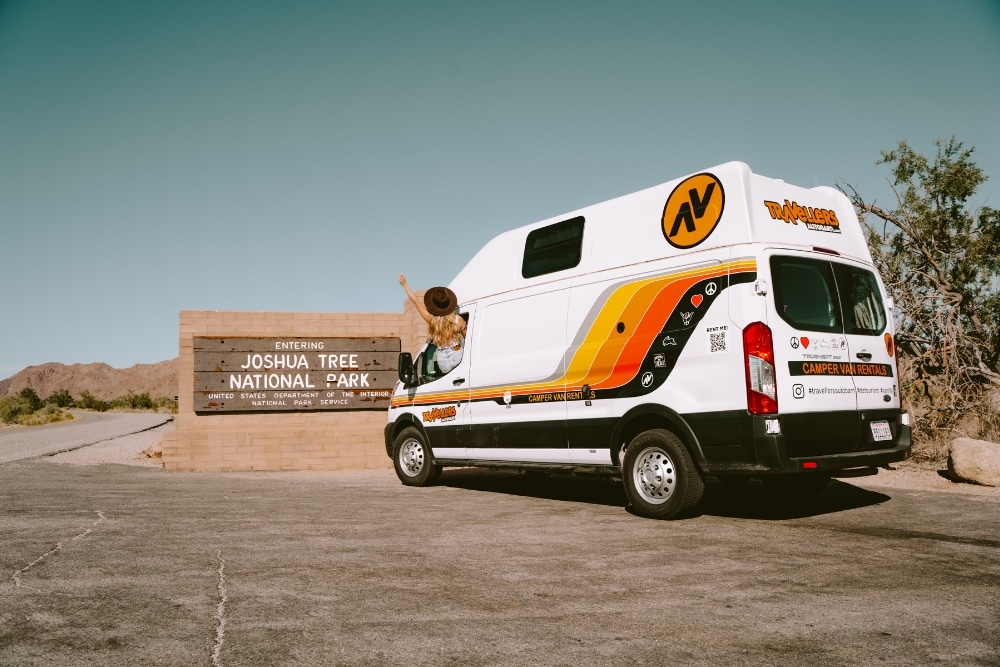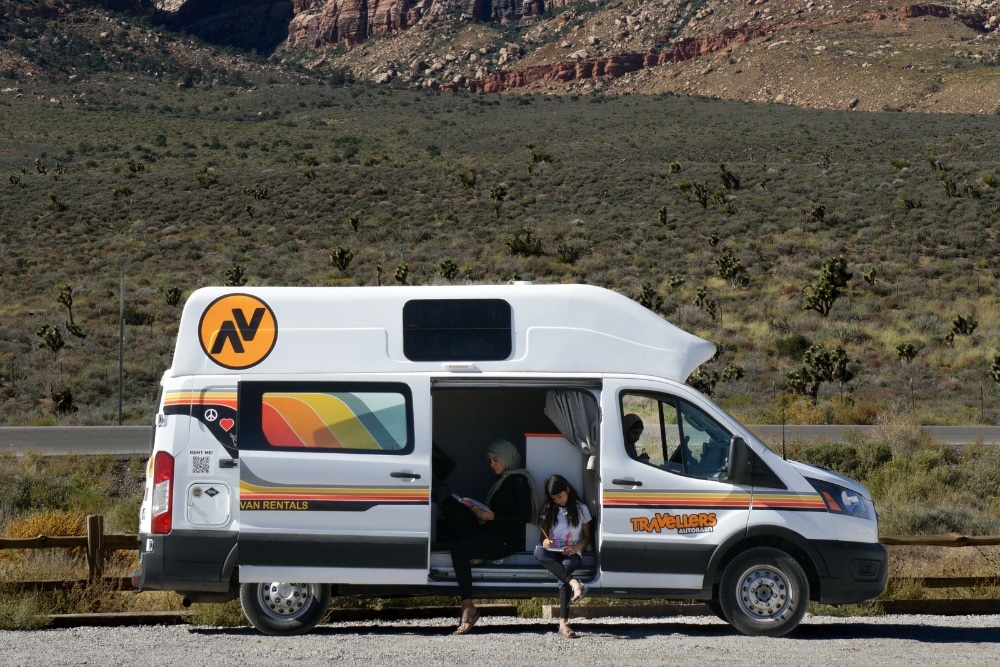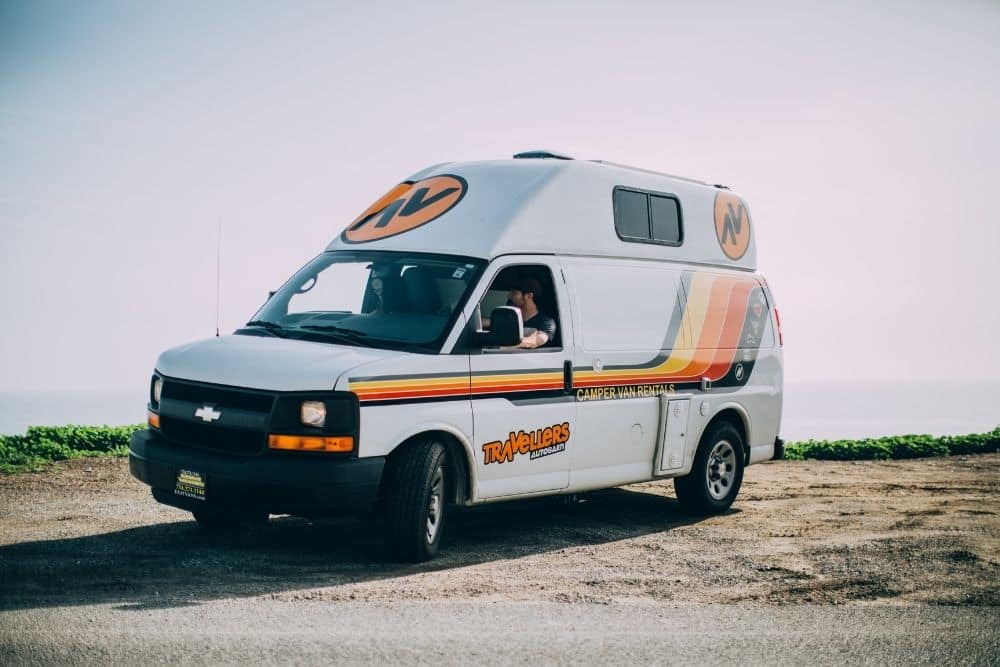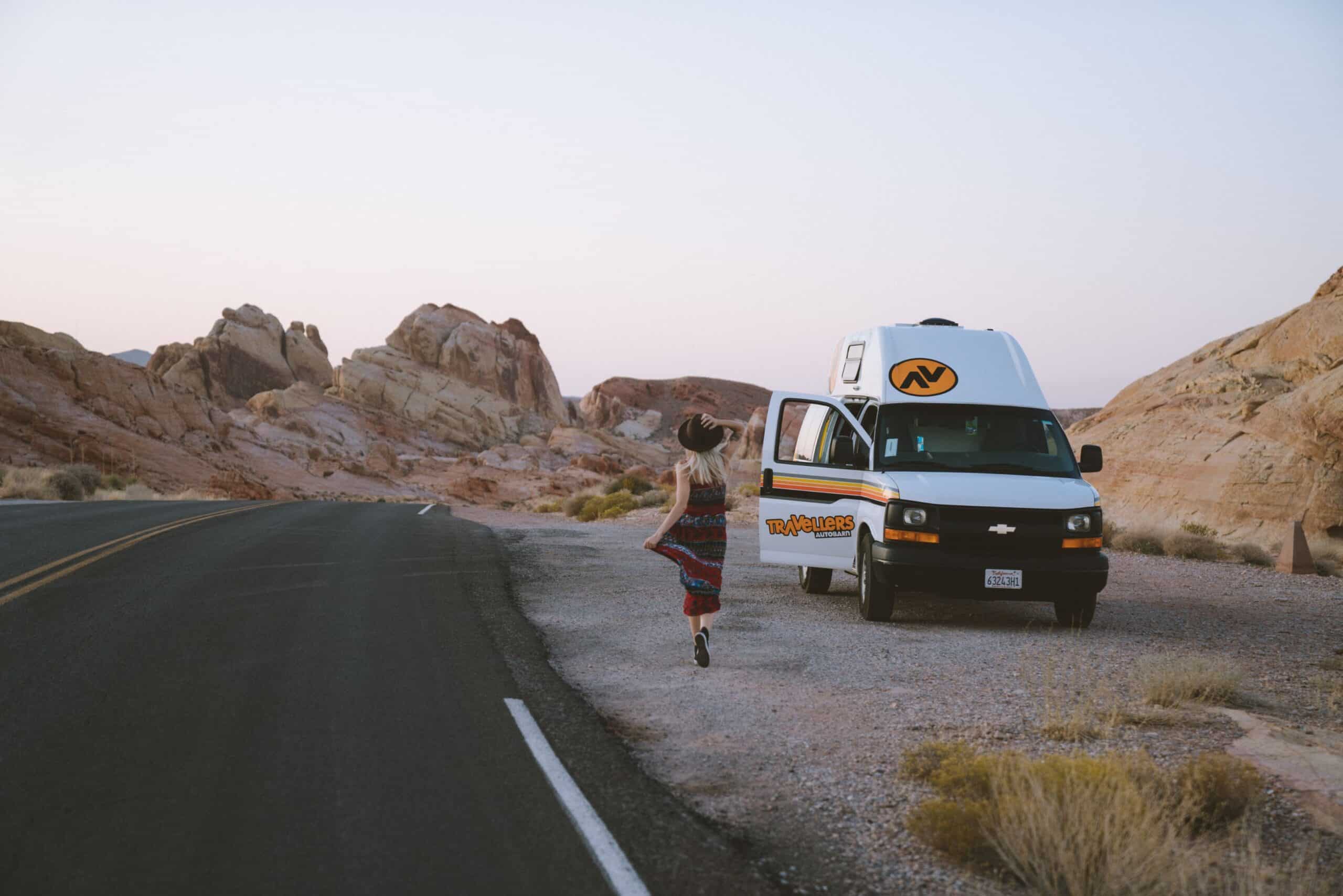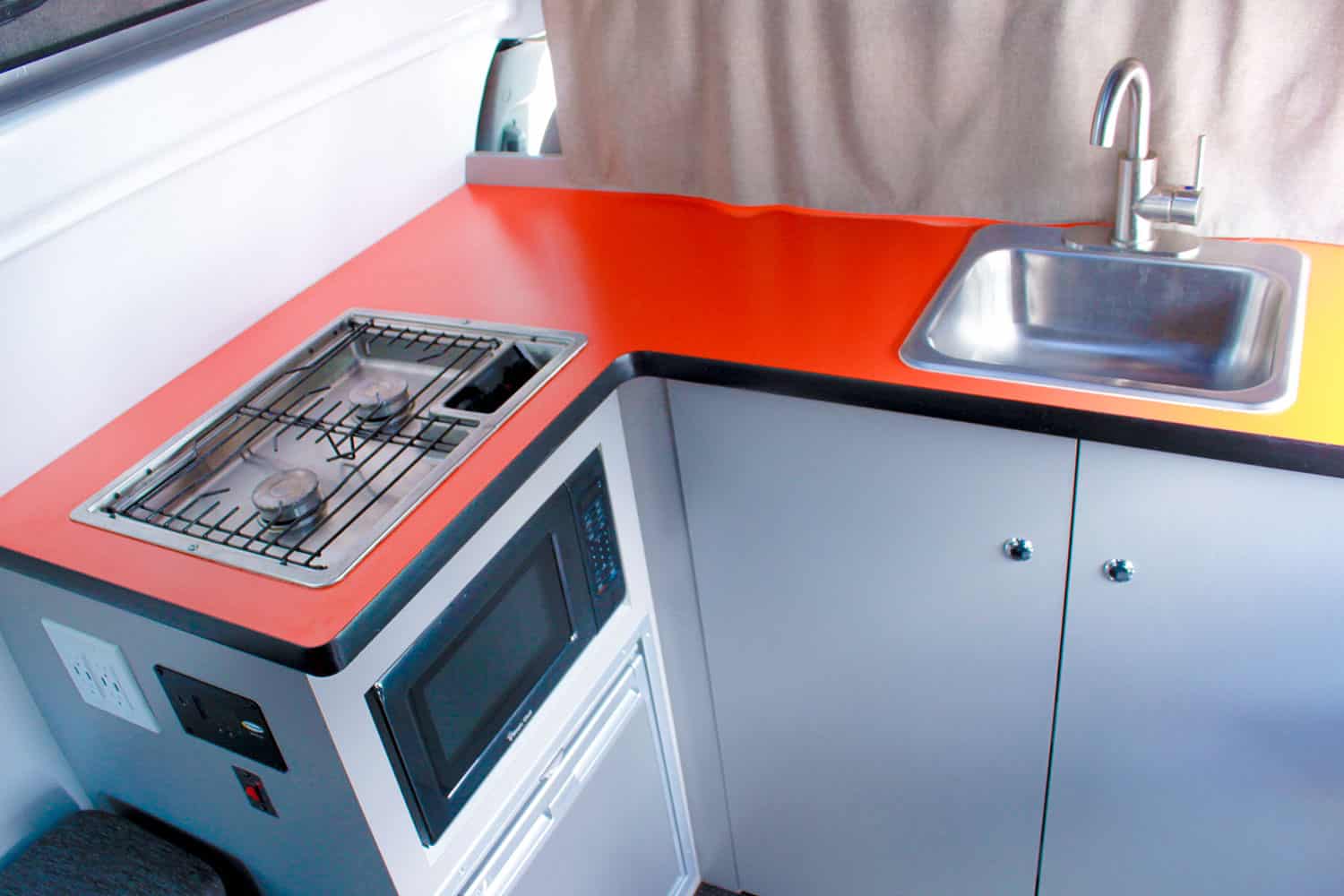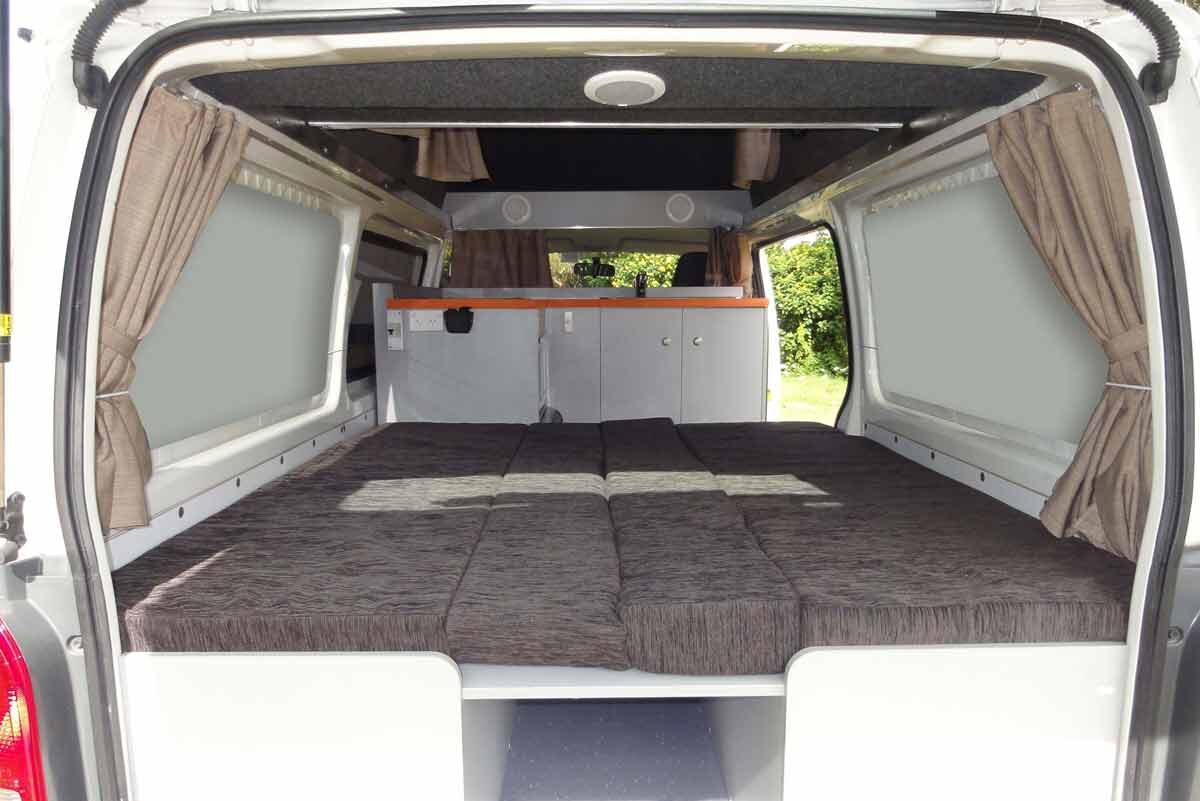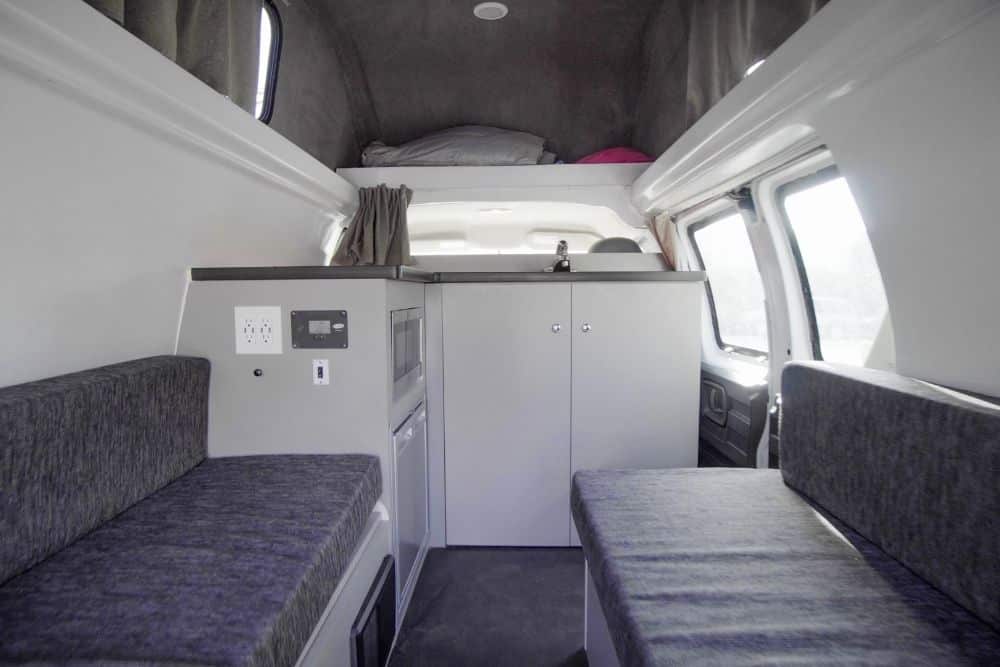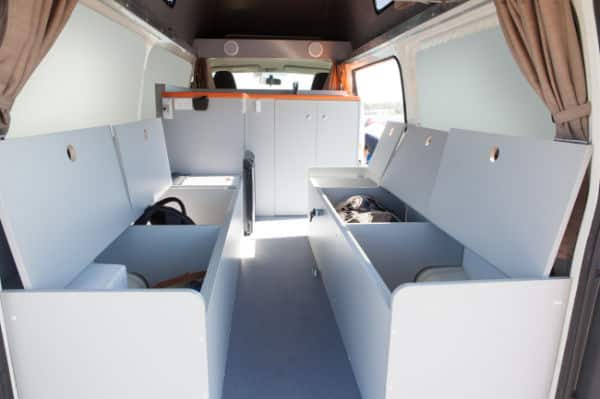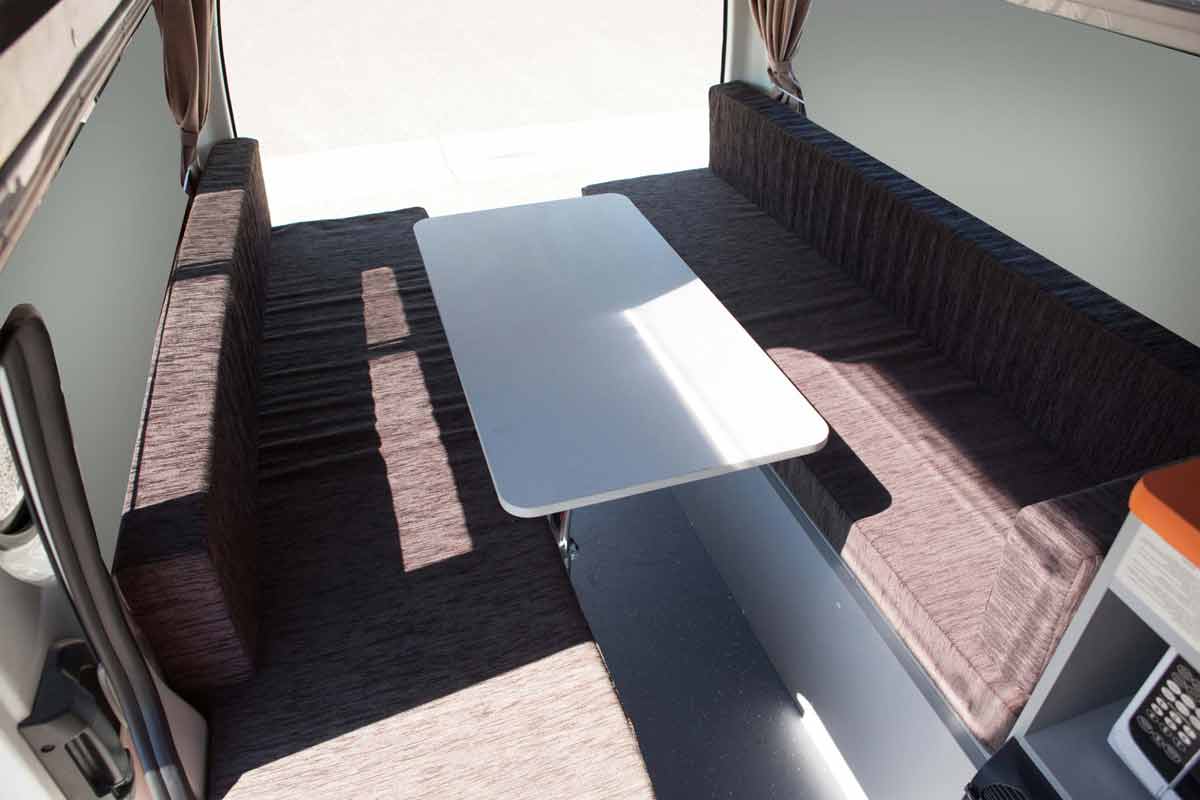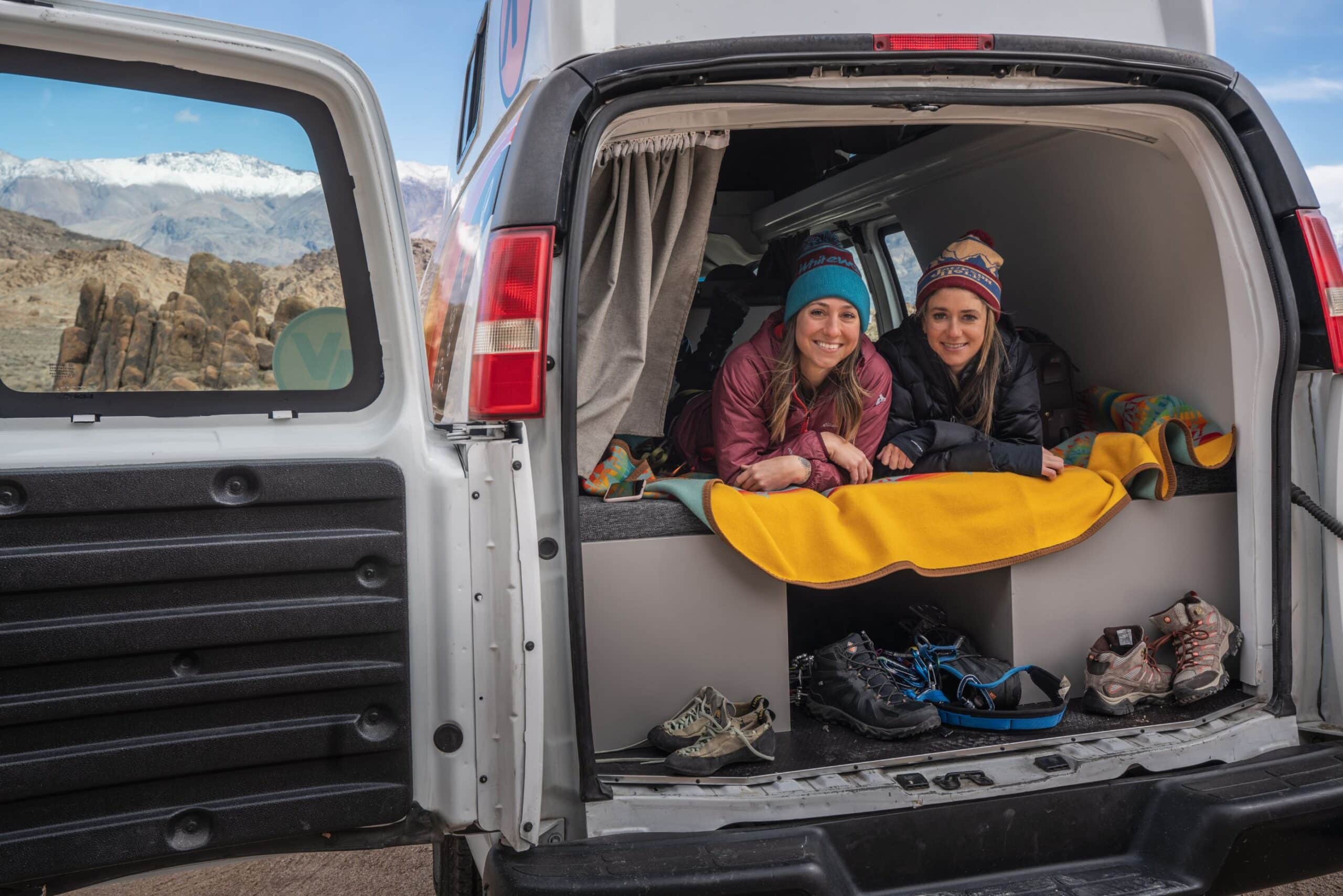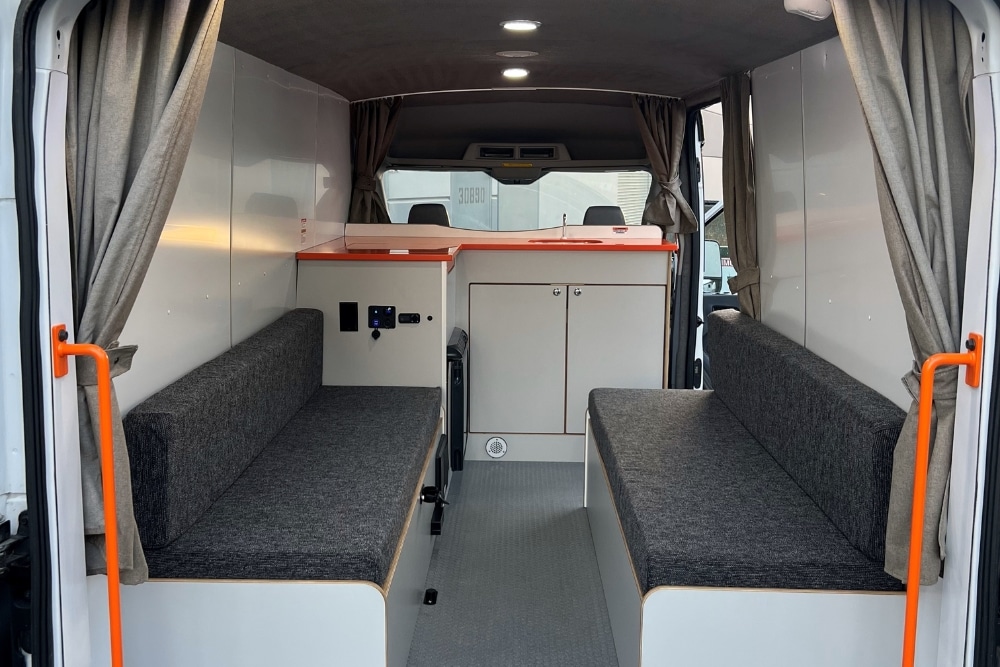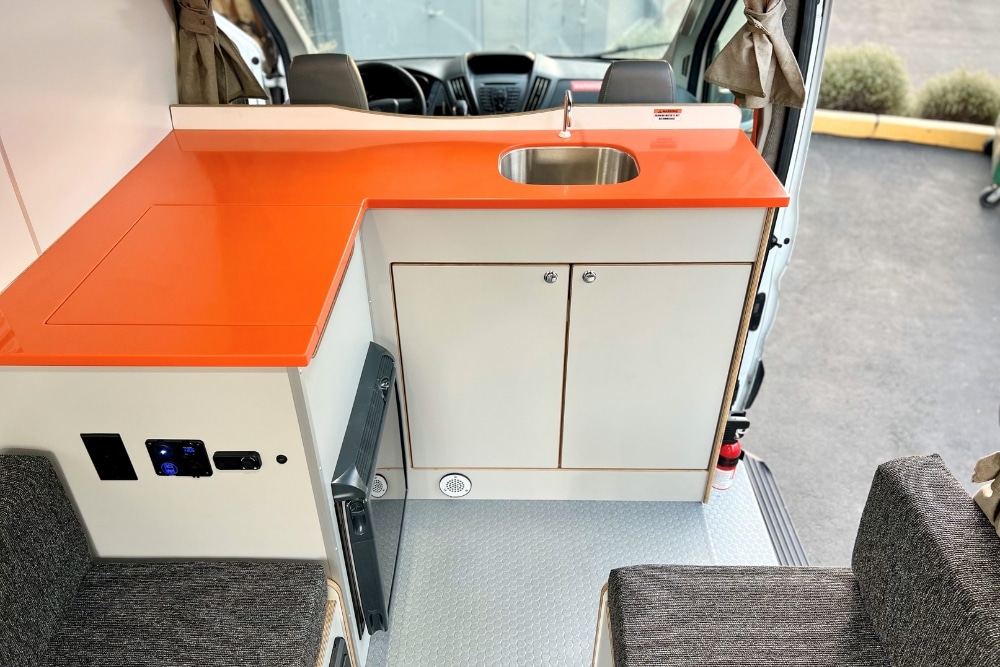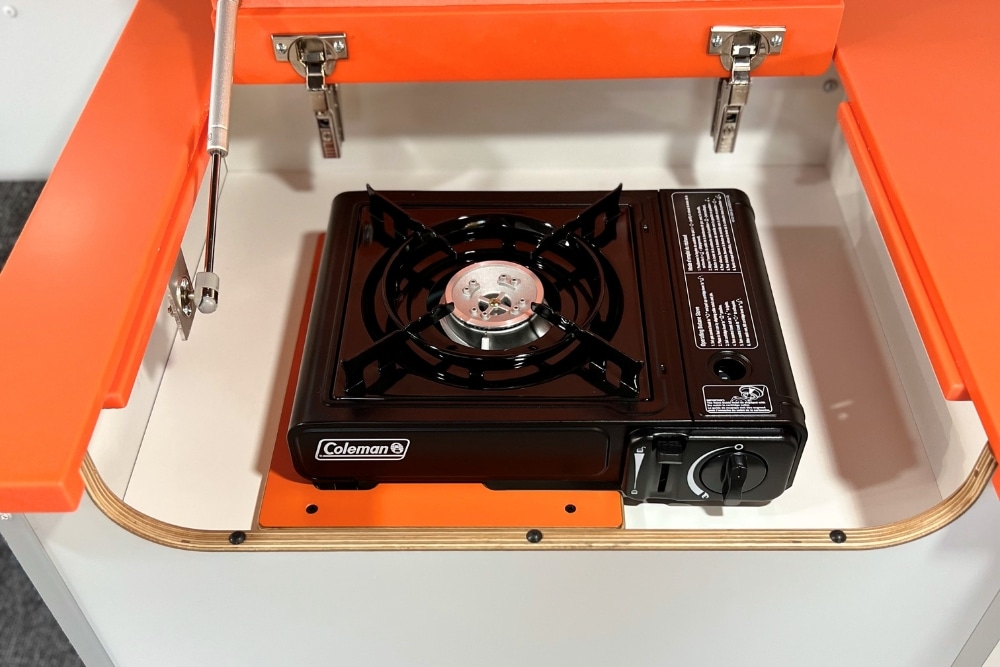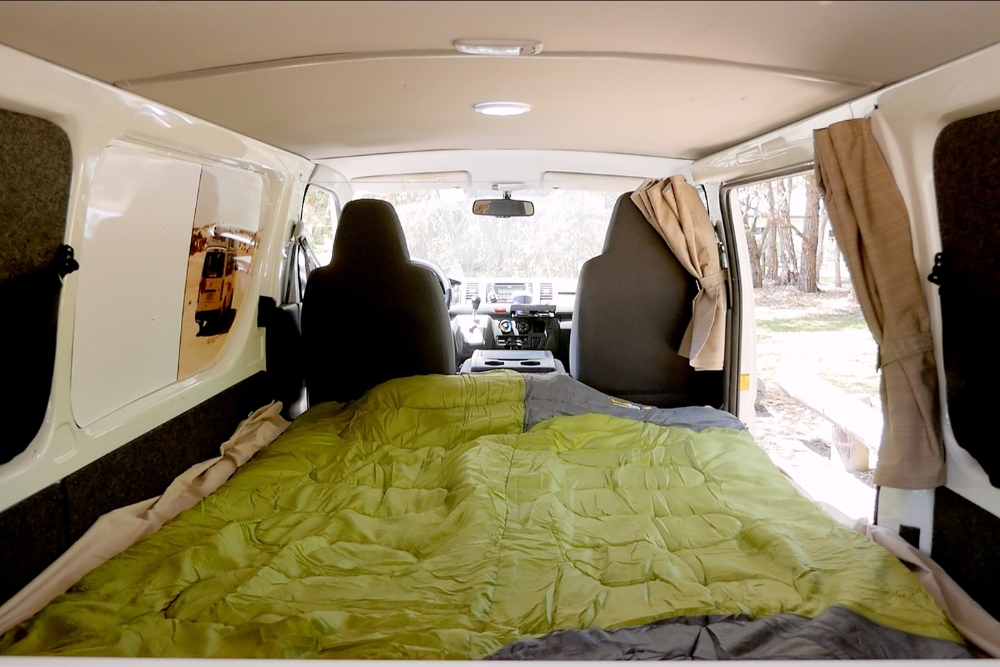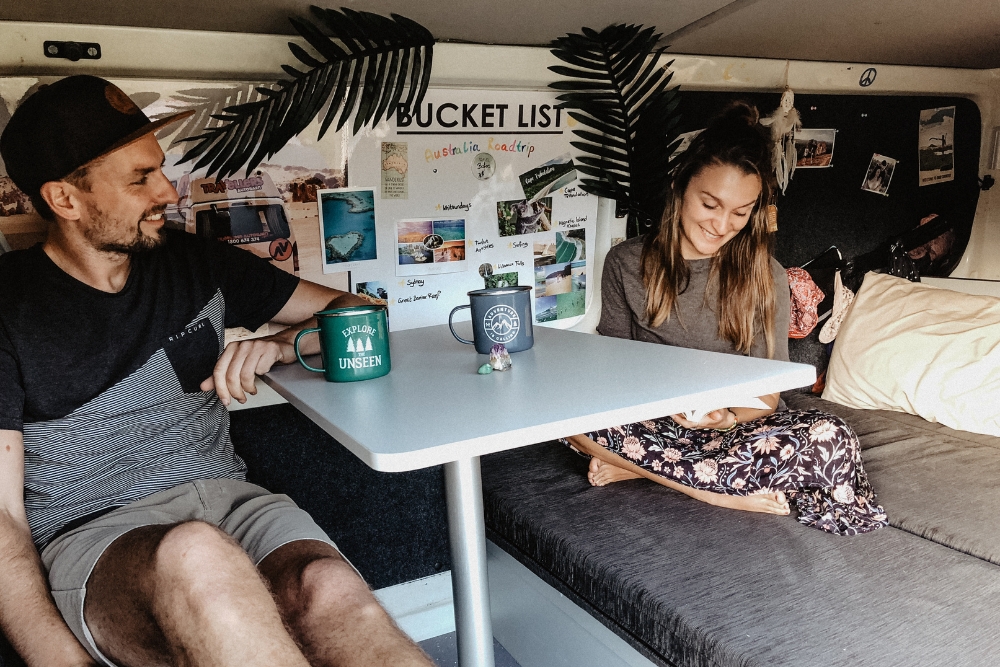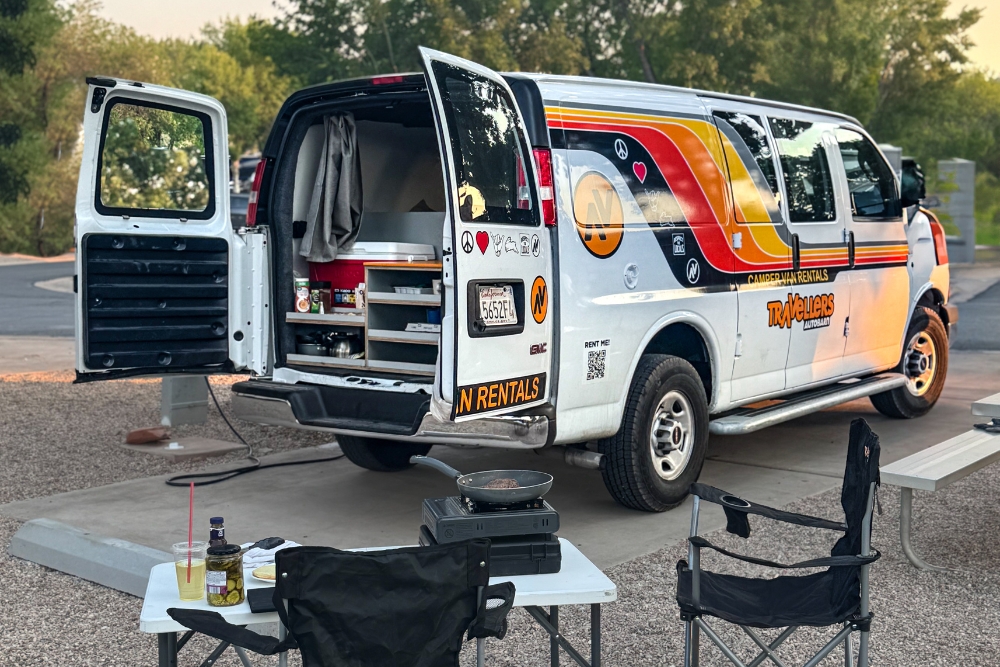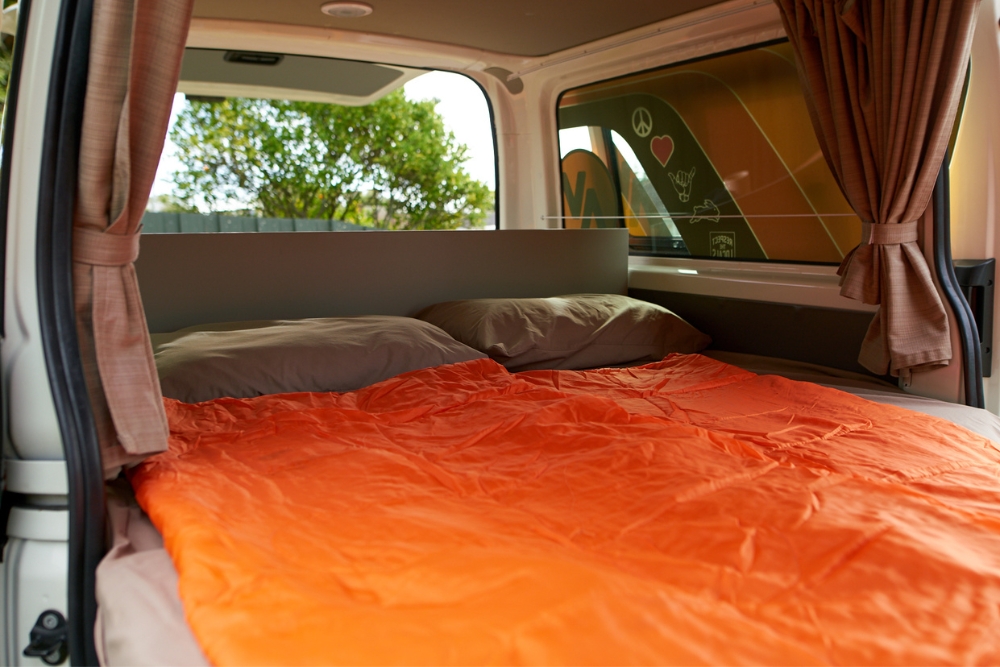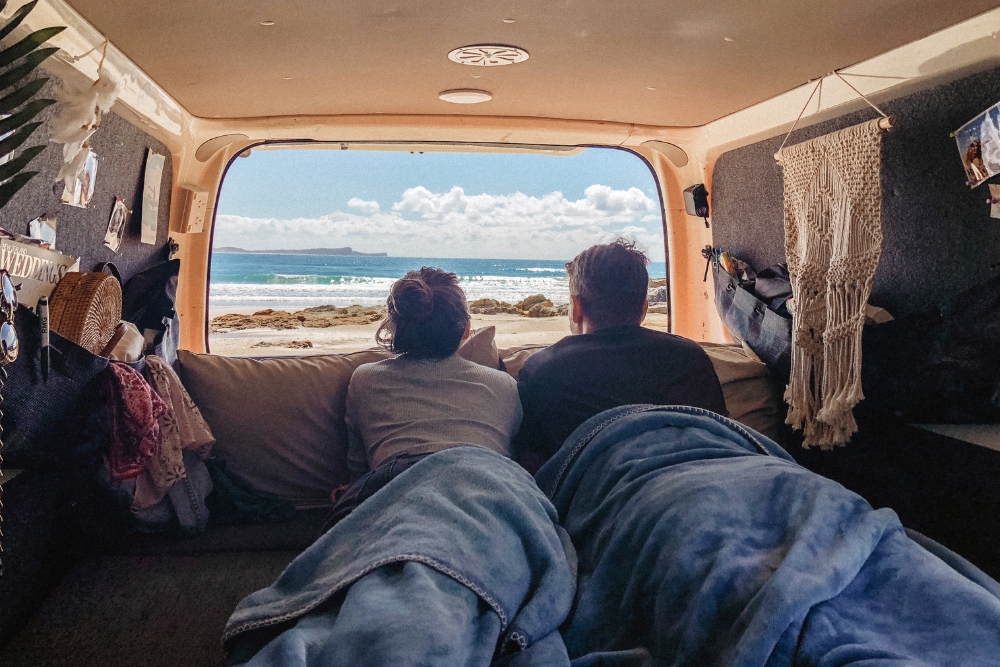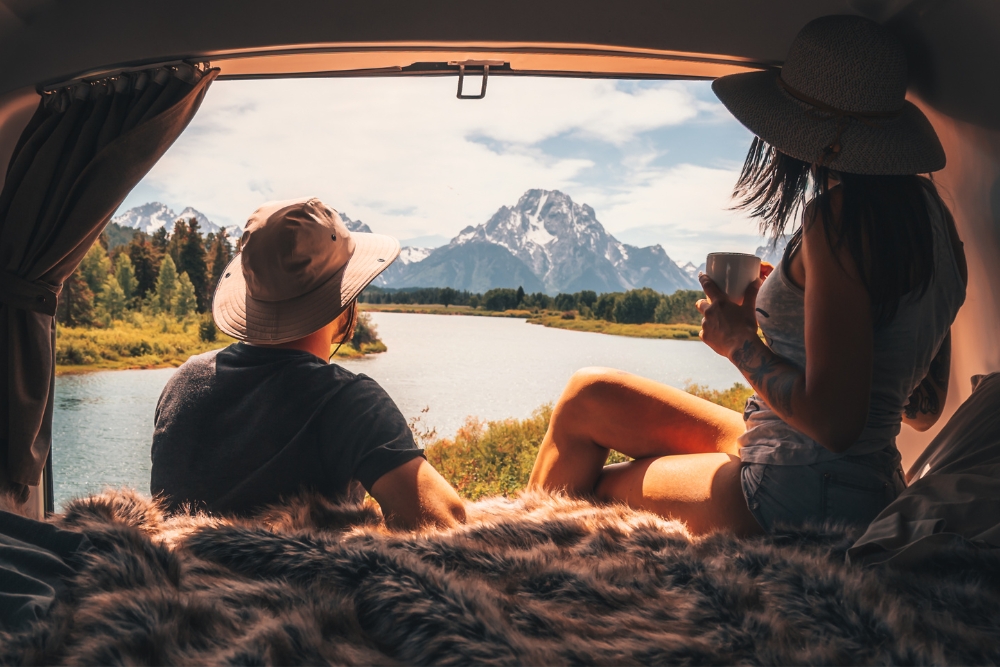Free camping – aka dispersed camping – around the United States sounds too good to be true, but it is entirely possible. The US has several free campsite options to help you save your travel budget for fuel, food, and recreation. However, dispersed camping is not for the glampers of the world. Dispersed campsites, although free, often don’t come with the luxuries that campgrounds offer, such as restrooms, running water, picnic tables, firepits, hookups, or garbage cans. Read on to learn where you can find free camping in the US, the rules of boondocking, and camping apps and sites that help you find these locations for your camping trip.
What Should I Know About Dispersed Camping?
Dispersed camping, also known as boondocking, can be summed up by “roughing it.” If you are choosing dispersed camping, you are most likely going to need to prepare for dirt roads, no amenities such as picnic tables, garbage cans, running water, dump stations, fire pits, restrooms, or cell service. If you are dispersed camping in a popular spot or a parking lot, then you may have access to a toilet. What you will have while dispersed camping is little to no neighbors, hiking trails into the backcountry, and solitude under the stars – the real camping in nature experience.
Before you head out on your dispersed camping adventure, make sure you research the areas you are heading too. Check into road conditions, weather, fire regulations & restriction (you may need a permit), and download the Red Cross First Aid app ahead of time. You will be without cell service, so preparing for all potential situations is essential.
Pro Tip: Look for signs that say “no camping overnight,” “no camping,” or “day use only.” When in doubt, check with a park ranger, or a manager of the business whose lot you plan to park in. Make sure you don’t just park on the side of a road as it is illegal in most places, and you can not boondock or free camp anywhere inside of a developed campground or recreation area.
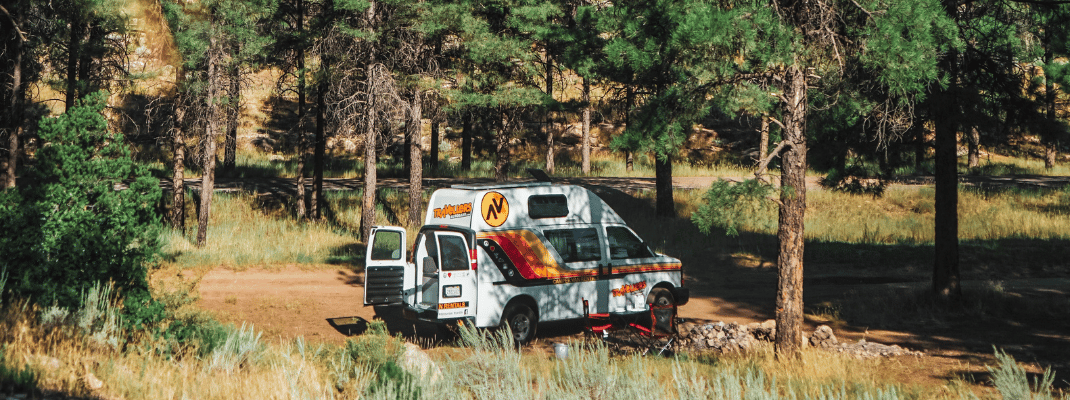
Where Can I Find Free Campgrounds in the USA?
National Forest Public Lands and Grasslands Free Campsites
Don’t confuse National Forests with National Parks. Although they are both public, protected lands, they are managed very differently and by two separate government organizations. You can camp in both; however, a majority of National Parks have mostly developed campsites with amenities, campground fees and don’t allow for dispersed camping or pets. Outside of US national parks is where will find National Forests and grasslands.
National forests do allow for dispersed camping for up to 14 days at no cost, aka free camping. These sites are off of the main roads, usually a dirt road, pull off, or access road. There are fewer regulations in US National Forests than in US National Parks, but there are some unspoken rules to follow. When dispersed camping in our national forests, or anywhere, rule of thumb is to be at least 100-200 feet away from any water source, main road or trail, and to leave no trace.
Leave No Trace Principles
- Bring a trash bag and leave no trash behind. When you’re free camping, there are no trash cans in the forests, so come prepared to pack out whatever garbage you bring in.
- Do not cut down trees or branches for firewood. Find dead branches and leaves that are already on the forest floor, or bring wood with you. Remember, these are the “leave no trace” principles, which include campfires. Make sure you know the fire danger and if fires are permitted in the area. Bring a shovel to extinguish any fire you build, and possible, use a fire pan or cookstove instead. Dispersed camping sites typically do not provide fire rings.
- Try and find a camping area where others have camped before instead of creating a new site.
- Leave the national forests the way you found them. There is so much beauty in our forests, so please leave it for others to enjoy.
- Respect wildlife! Remember, you’re on their turf! Whether you are in a national forest, national park, or on the side of the road – respect the animals. If you’re lucky enough to see them – leave it at that. It is not time to take a selfie, see if you can pet them, or try and harass or harm them.
You can learn more about the Leave No Trace Principles at Int.org.
Pro tips: State parks are like our US National Parks. They can be pricey to camp in and typically do not offer any free camping or dispersed camping options.
Where can I locate these National Forests and free campsites?
There are 154 national forests managed by the United States Forest Service (USFS). You can pick up a USFS map at nearly all local convenience stores, so make sure to pick one up when you fill-up the gas tank.
You can also go online and check out the Forest Service’s Interactive Visitor Map (https://www.fs.fed.us/ivm/), freecampsites.net or download the Ultimate US Public Campgrounds app. There is a $3.99 fee for the app, but it is worth the money. If you’re really on a tight budget, Campendium – RV & Tent Camping basic app is free but does have in-app purchases available.
Bureau of Land Management (BLM) Free Camping

BLM public lands are mostly found in the western part of the United States, such as Montana, Idaho, Utah, Colorado, California, New Mexico, Nevada, Oregon, Arizona, Wyoming, and Alaska. BLM lands have similar rules for camping as US National Forests. BLM lands are managed by the US Department of the Interior, which is different than US National Forests and US National Parks, so make sure you know the specific dispersed camping guidelines for BLM lands.
The Bureau of Land Management allows camping for up to 14 days in a 28 day period. However, the 14-day rule is not consecutive days, but 14 total days in a 28 day period. The count begins on the first day the camper occupies a site. Once you’ve met the 14-days, either collectively or consecutively, you can’t set up camp anywhere on BLM lands within a 25-mile radius of your previous spot until day 29.
Make sure and follow the Leave No Trace principles, and keep your eyes open for “No Camping” signs.
Pro Tip: Dispersed camping sites are typically best for campervans, small RV camping, tent camping, or car camping. The spots generally are smaller are more difficult to fit or maneuver larger RVs or motorhomes.
Where Can I find the Bureau of Land Management (BLM) Free Camping sites?
Much like National Forests, you can find BLM Regional or state maps at most convenience stores. The Bureau of Land Management also provides online interactive maps, both nationally and state-specific. Make sure you prepare and Google ahead of time, because you may not have cell service when you’re dispersed camping.
If you are willing to spend 99¢, the United States Forest Service and Bureau of Land Management have joined together to provide the USFS & BLM Campgrounds app. With over 5800 free or low-cost campgrounds on this app, you’re bound to find your perfect free camping spot for your dispersed camping adventure.
Pro tip: National Forest and grasslands and BLM lands are public lands. Typically you can not disperse camp on private lands unless you have permission. There are some free camping opportunities on private lands. *Check out Hipcamp.com and Boondockerswelcome.com. (access or booking fees may.)
Free Camping or Boondocking in Parking Lots like Walmart
Yes, you read that correctly. There are businesses all over the United States that allow you to park your RV or Campervan in their parking lot. Some of the most well-known spots are in the parking lots of Walmart, Cabela’s, Camping World, and Cracker Barrell. Other options to consider are truck stops like Flying J, casinos, and rest stops along highways.
What do I need to know about camping in parking lots?
Always ask. Don’t assume that because you stayed at one Walmart without issue, you will be able to park overnight at any Walmart. Make sure to go inside, or call ahead, and find out their camping policies. Usually, places like Cracker Barrell, Costco, Walmart, and Flying J don’t want you to set up a full campsite and are merely allowing overnight parking, so don’t overstay your welcome.
Rest Stops
Rest areas provide a pull off for tired drivers to rest to help keep people alert and awake on the road. Rest stops have bathroom facilities with sinks and toilets and trash cans and are intended for travelers to pull over to rest or use the facilities. Although rest areas don’t necessarily follow the Leave No Trace principles, they’re still great rules to follow. Make sure your trash makes it into the bins, and you’re respectful of the restroom facilities.
Truck Stops
Truck stop parking lots are the “glamping” of parking lot camping. Most truck stops not only have restroom facilities that they allow you to use but also showering facilities. They may charge a small fee, so make sure you go in and ask before scrubbing down. Truck stops are great because they’re also an opportunity to stock up on food, water, supplies, and fuel before you head to your next destination.
Casinos Parking Lots
Some casinos will allow you to park in their lots for free, but make sure to ask the front desk before you settle in for the night. Casinos may not be a significant money-saving option should you decide to try your hand at the slot machines or tables!
Keep in mind that these business owners are allowing you on their property for the night, so be respectful of their property and other boondockers, patrons, and truck drivers who are visiting.
Pro Tip: Parking lots, especially at truck stops, are not unusually quiet. If you aren’t a deep sleeper, you may want to consider packing a pair of earplugs.

Find popular road trips across the USA
- Check Out Los Angeles Road Trips
- Check Out Las Vegas Road Trips
- Check Out San Francisco Road Trips
- Check Out Miami Road Trips
- Check Out Denver Road Trips
- Check Out Seattle Road Trips
- Check Out New York Road Trips
Once you know where you’re headed, find your next free USA camping location and get ready for the adventure of a lifetime! Also, Check out our full list of recommended campgrounds across the US.
Get the best rates on campervan rentals across the USA
No matter where your travels take you, finding the right rental at the right price makes all the difference. Our budget campervan rental in the USA ensures you get both quality and value, so you can focus on the journey ahead. Start your adventure with confidence, knowing you’ve secured a great deal.
FAQs about free camping in the USA
Yes, there are plenty of free camping spots across the USA if you know where to look. The best places to start are National Forests, National Grasslands, and BLM lands, also known as Bureau of Land Management areas.
National Forests allow free dispersed camping for up to 14 days. These sites are usually located off dirt roads or pullouts and don’t offer many facilities, but they give you a quiet place to stay surrounded by nature. BLM lands are primarily found in the western states like Utah, Colorado, California, and Nevada. The rules are similar, though BLM is managed separately from National Forests.
Yes, having a self-contained campervan is the best way to freedom camp in the USA. Most free campsites don’t have toilets, running water, or trash cans. You’ll need to bring your own toilet, water supply, and waste storage. In some cases, you may get lucky at a campsite with a range of facilities. But it’s not guaranteed.
On National Forest land, you can typically stay up to 14 days in one spot within a 28-day period. On BLM land, you can stay for a total of 14 days in any 28-day period. Once you reach that limit, you have to move at least 40 km (25 miles) from your last site and wait until day 29 before returning.
No, most freedom campsites in the USA work on a first-come, first-served basis, so you wouldn’t need to book before you arrive. You simply rock up at the site and choose an available spot to set up camp. Keep in mind that during the busy seasons, freedom campgrounds fill up fast, so you may want to get there earlier to secure your spot.
Yes. The USA has designated freedom camping areas that they expect you to use, and if you’re caught freedom camping in the wrong places, you could get a fine of between $200 and $1000 or even 6 months of jail time, depending on the circumstances around where you were caught. To avoid getting fined, we recommend doing thorough research into freedom camping areas and keeping an eye out for regulatory signs around areas when arrive.
About the Author
Bastian Graf
Bastian is the Sales & Marketing Manager here at Travellers Autobarn. He holds a Master of Commerce in Marketing and International Business Management, and 20+ years experience in campervan hire, road trips and travel.











